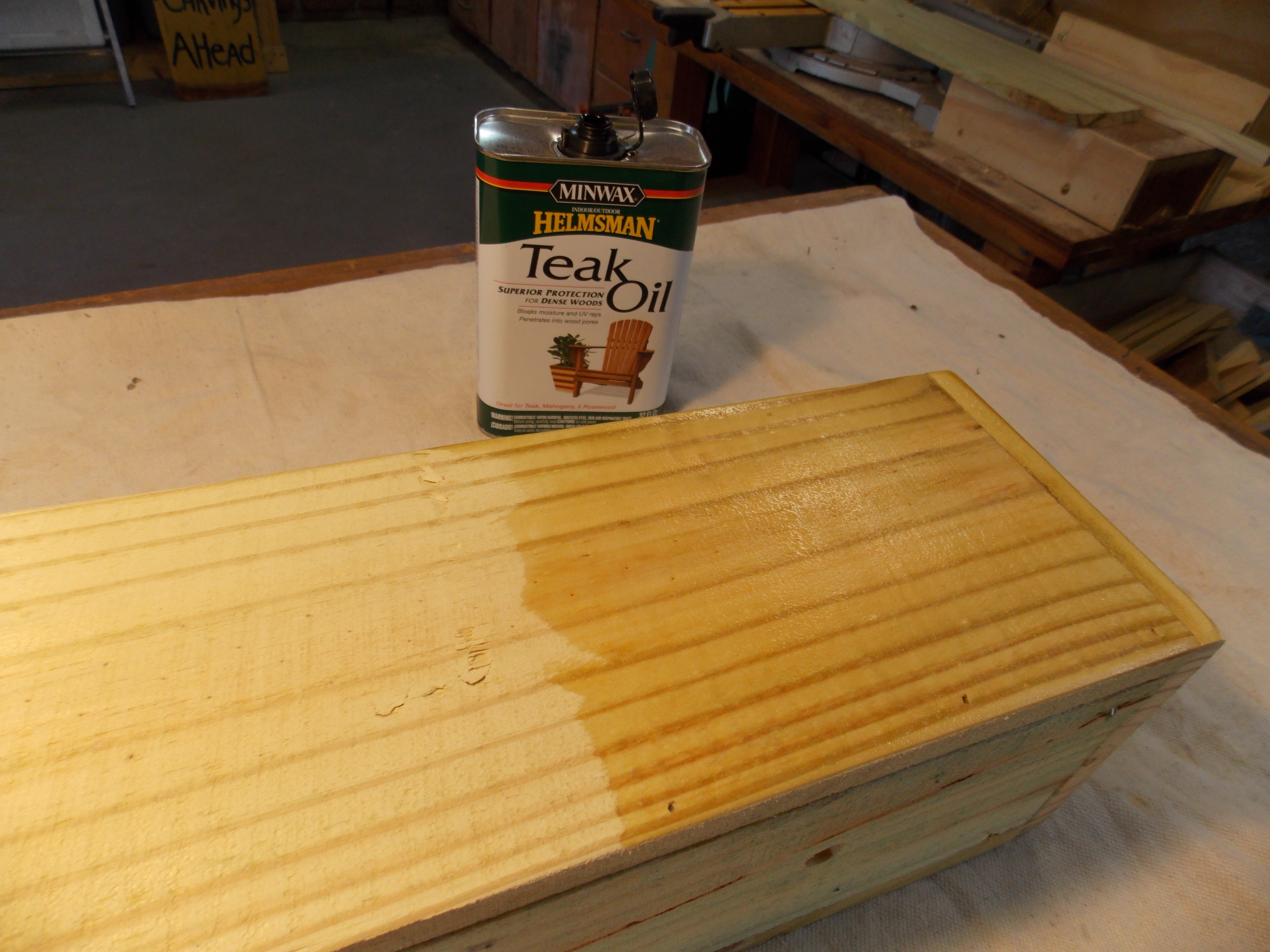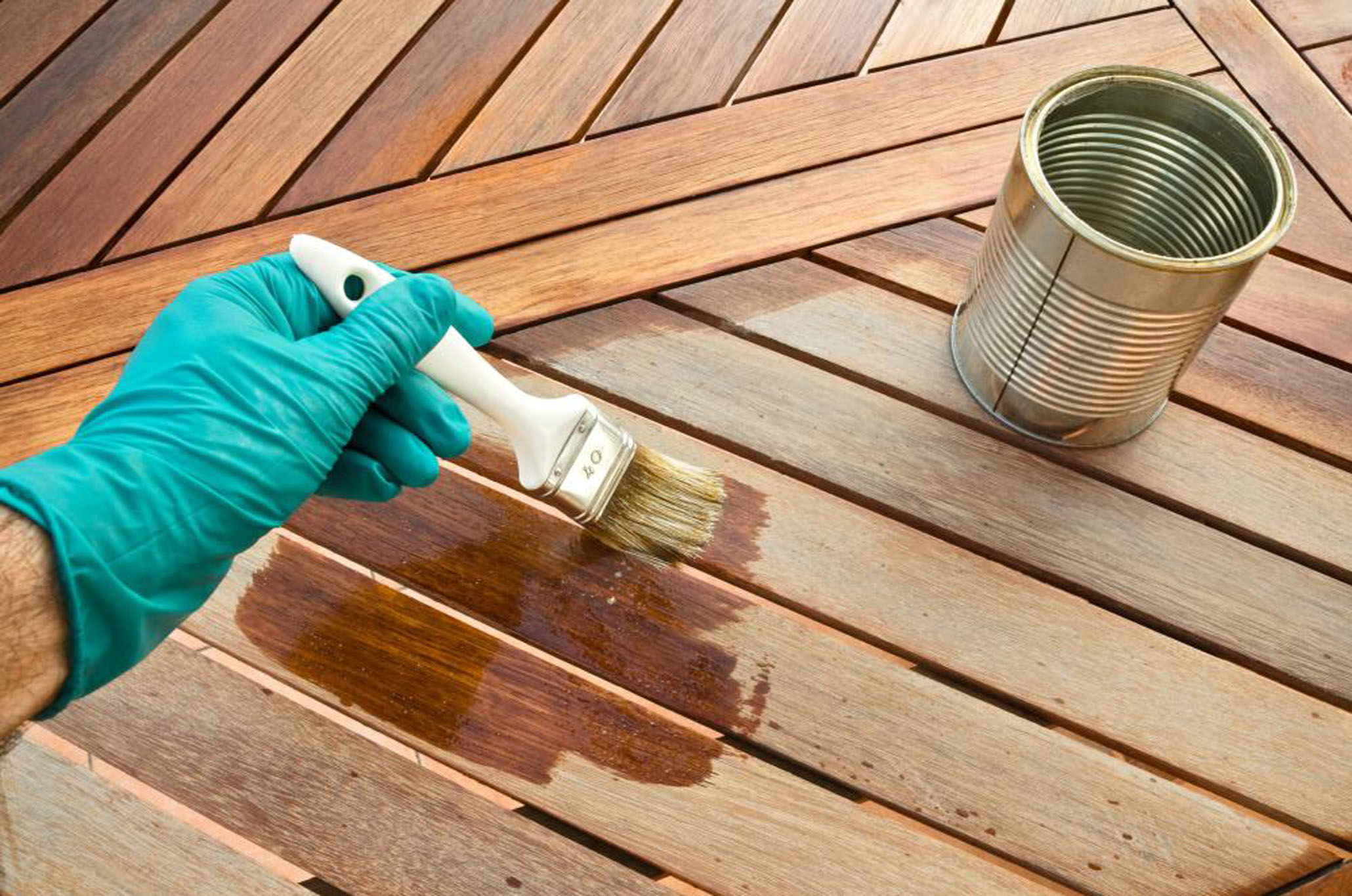
What is the first thing that comes to your mind when you hear the word combination “teak oil”? “Maybe it is the natural oil made out of a teak tree.” But in fact, teak oil has nothing in common with a teak tree.
Now we are going to clear up is teak oil food safe? Precise and fair answer
- What is teak oil made out of?
- Why Use Teak Oil?
- Is Teak Oil Food Safe?
- Origin of the name “teak oil”
- Is it food safe to put teak oil on cutting boards?
- Is teak oil finish suitable for butcher block countertops?
- Food-safe Alternatives for Teak Oil
- Is it appropriate to use olive oil on the butcher block?
- How to handle teak salad bowls?
- Conclusion
- FAQs
- Is teak oil toxic to humans?
- Is teak oil food safe? Precise and fair answer
- What wood oil is food safe?
- Is Watco teak oil and stain food safe?
What is teak oil made out of?

In fact, teak oil is a mixture of oils manufactured from natural oils such as tung oil and linseed oil. In the majority of cases, chemical supplements such as varnish, turpentine, and mineral spirits are added to the teak oil.
According to the composition of teak oil, we can draw a conclusion that it has nothing to do with a teak tree. And it might make you think that teak oil is not food safe.
You can get acquainted with a more detailed analysis in the paragraph “is teak oil toxic or not?”
Why Use Teak Oil?
The main reason for using teak oil is to protect wood furniture like chairs and drawers. But the most proper way to use teak oil is the durable finish of outdoor furniture (terraces, gazebos, etc.).
The oil finish protects furniture from direct sunlight and oxidizing effect of air. It is recommended to reapply teak oil every 6 months.
READ ALSO: Can you use oil paints on wood: full instructions
Is Teak Oil Food Safe?
Let’s get down to the in-depth examination of the constituents of teak oil.
However, it is impossible to figure out the precise composition of the oil because it is quite variable. The variance of its contents depends on the manufacturers.
After careful product analysis of multiple manufacturers, we establish the list of substances that are included in the composition:
- Linseed oil can be non-toxic if it is pure oil
- Tung oil can be non-toxic if it is raw oil
- Turpentine – toxic chemicals
- Varnish – toxic chemicals
- Mineral spirits – toxic
According to the result of the analysis, you can see that teak oil has a variety of chemical additives in its composition and the percentage of pure oils is absolutely low. It is not food safe.
Even if you find teak oil with the addition of linseed oils and tung oil only. You may decide that the absence of chemical additives is a good sign. But in reality, it won’t be trustworthy. This fact does not do teak oil safe. Because this kind of oil will be a blend of a small number of pure oils. It certainly won’t make it food safe.
Origin of the name “teak oil”
As far as you understand, teak oil has no resemblance to natural oil. And the name of this oil is just a marketing trick. This oil finish was initially conceived as an oil for teak wood.
In fact, teak oil is similar to danish oil. Because their compositions are much the same. For example, linseed oil, tung oil, varnish, and mineral spirits are added to danish oil.
Is it food safe to put teak oil on cutting boards?

Teak oil is not food-safe at all because it contains a number of chemicals in its form. And even dried substance doesn’t make teak oil finish safe. Make sure the oil doesn’t come into contact with the food.
Since the cutting board is directly involved in the cooking process, you should avoid getting oil on them. Even if you apply teak oil on the cutting board, it can lead to a health hazard.
If you are searching for a food-safe finish that is possible to apply on the cutting board, it is advisable to use food-grade mineral oil, walnut oil, carnauba wax, or natural wax.
Is teak oil finish suitable for butcher block countertops?
Butcher blocks are the type of surface that is directly meant to contact food. Because of the chemical additives, use teak oil is not safe enough.
Boiled linseed oil is also a popular product that consumers choose to finish their butcher blocks. However, it is extremely toxic and does not safe for human consumption.
But pure tung oil, raw linseed oil, and food-grade mineral oil will be a perfect match for butcher blocks. Pay attention that it is important for tung oil to be raw and for linseed oil to be pure. Because these points guarantee that the oils will be non-toxic and food safe.
Food-safe Alternatives for Teak Oil

We have already proved that teak oil is not food safe. And now we are ready to present the list of the natural oils and finishes that undoubtedly can replace it.
- Food grade mineral oil – mineral oil is food safe and easy to apply. It can easily be found in any supermarket. The only drawback of mineral oil is the need to reapply frequently.
- Walnut oil – walnut oil is a food-safe drying oil. This natural oil can easily contact with food (apply on cutting boards). But be attentive while using it. Because walnut oil can trigger an allergic reaction in people with nut allergies.
- Carnauba wax – carnauba wax is a natural substance that is safe to consume. And it is a useful alternative to finish wood. But it is not heat-resistant.
- Pure tung oil – tung oil is a drying oil that is also food safe. However, it is challenging to find natural oil because most of what the market offers will still be filled with chemicals.
- Raw linseed oil – the most important thing you should know about linseed oil is that it should be raw. Because there is a risk of being cheated and buying oil that will be no different from teak oils.
- Distilled coconut oil – coconut oil is a tasteless, food-safe oil. Make sure that you don’t confuse regular coconut oil with distilled. Because most of the oils offered in supermarkets are not natural.
Is it appropriate to use olive oil on the butcher block?
Maybe this variant of using olive oil comes to your mind when you find out that the statement “teak oil food safe” is wrong. This oil is affordable and natural oil.
But this is mistaken to replace teak oils with this one!
Olive oil, as well as sunflower oil, vegetable oil, and corn oil, are not appropriate options because of their rancidification. An unpleasant smell can appear.
How to handle teak salad bowls?

While taking care of teak salad bowls, you should remember that it is a must to use hand-wash and dry with a damp cloth. Don’t use the dishwasher and don’t put it in the microwave or the fridge. It is not recommended to heat such cookware as it destroys the surface. To keep the dishes in a good finish, you can wipe them with mineral oil.
Conclusion
We hope that due to this article, you have received the answer to the question “is teak oil food safe”.
To use teak oil on cutting boards, and butcher blocks, mean being exposed to chemicals that are in its composition. Instead, you can find safe food alternatives. Natural oils such as mineral oil, coconut, or walnut oil are something you have to pay attention to.
You should always look closely at the composition of the product you buy since marketing tricks still exist, and they can knock you down, forcing you to buy a fake product.
FAQs
Is teak oil toxic to humans?
When using teak oil on surfaces such as cutting boards or butcher blocks, of course, teak oil is toxic to humans. Since the listed surfaces come into direct contact with food, the chemical additives will be able to get into your body.
Is teak oil food safe? Precise and fair answer
No, teak oil is not safe for food. The number of chemicals that are added to it, makes this liquid unfit to be consumed. You can’t safely cover the cutting board with these oils.
What wood oil is food safe?
Boiled linseed oil, mineral oil, and pure tung oil are non-toxic finishes you can use. But it is recommended to study the composition carefully so as not to encounter deception.
Is Watco teak oil and stain food safe?
It is better to use Watco Danish oil instead of Watco teak oil.
Danish oil is a blend of varnish and linseed oil that can maintain wood furniture and at the same time, it is food safe.


![How Long Does Wood Siding Last? [3 Lifespan Secrets] How Long Does Wood Siding Last: The Best Guide 2024](https://bestwoodforcarving.com/wp-content/uploads/2024/01/How-Long-Does-Wood-Siding-Last-3-Lifespan-Secrets-335x220.jpg)
![Examine [5+ tools and techniques] to cut square hole in wood Cut Square Hole In Wood: 5 Best Ways To Do It Perfectly](https://bestwoodforcarving.com/wp-content/uploads/2024/01/cut-square-335x220.jpg)
![Burn, laser, tool, CNC, hand wood engraving [5 ways explained] Hand Wood Engraving And Other Best Ways To Work With Wood 2024](https://bestwoodforcarving.com/wp-content/uploads/2024/04/bestwoodforcarving.com_-335x220.jpg)

![How long for wood filler to dry? [Tips & Tricks] wood 26](https://bestwoodforcarving.com/wp-content/uploads/2024/01/wood-26-335x220.jpg)


![How to remove white spots from wood furniture? [10 super-easy methods] How To Remove White Spots From Wood : Top 10 Best Tips](https://bestwoodforcarving.com/wp-content/uploads/2023/12/wood-12-335x220.jpg)
